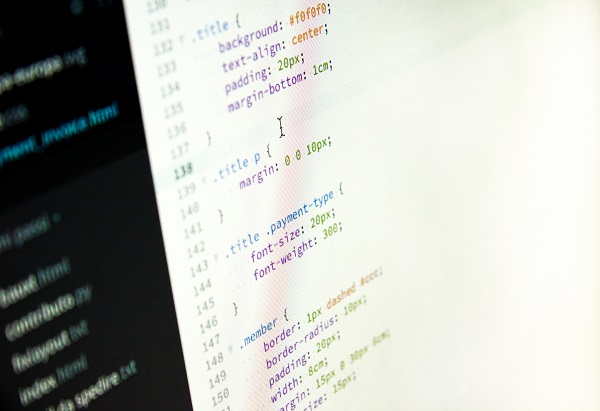Charting the Path- A Chronicle of the Web Designing Course in Chennai
Picture yourself in a city where the digital art of web design began quite simply. Chennai is where your dream to become an expert web designer takes root, growing alongside the internet’s own progress. Let’s start by looking back at how web design has evolved from plain text displays to today’s complex sites. Enrolling in Aimore Technologies’ web designing course in Chennai (https://www.aimoretechnologies.com/web-development-course-in-chennai/) sharpens your tech skills and immerses you in the rich history of a domain that has changed how we communicate. Set sail on a journey through time, noting how Chennai has added its own distinct tale to the global saga of web design.
The Dawn of Web Designing in Chennai- The 1980s and 1990s
Picture the early days when the internet was just an idea from a 1940s book. Zoom to the 1980s- a key time for computers. Where the first websites had text on a plain black backdrop, these simple sites laid the groundwork for today’s vibrant web spaces.
In 1989, a huge stride was made when Tim Berners Lee at CERN gave us the first web server, browser, and site. His efforts in 1989 and 1990 sparked the drive and wonder leading to today’s digital realm. That initial site’s simple structure marked a big moment in web design history.
By 1991, Berners Lee’s world-first site was up, using HTML to set a lasting trend for web pages. The launch of HTTP and hyperlinks changed site building, making info sharing easy and natural.
The 1990s saw web design get more complex and capable. This time, set up future growth, leading to more eye-catching, advanced sites. For Chennai, like everywhere else, the web design story was just starting, leading to the rich, engaging web encounters you see now.
The Mid-1990s- Search Engines and Graphic Design Tools
Your path into web design starts with a big change: the first search engine, Archie. Created by three college kids, Archie reshaped how people used the growing Internet, allowing them to look for files in a database. This marked a key turn in Internet history.
At the same time, Adobe Photoshop came out. This graphic tool opened up new opportunities for web design, allowing designers to craft and change images in new ways.
Another big step was the ViolaWWW browser, which supported scripts, tables, and forms and even had a stylesheet to set a site’s look. This browser hinted at the dynamic and visually rich sites that would become common later.
The mid-1990s saw key tech changes that influenced web design. Let us look at some major steps from that time:
- The birth of the first search engine, Archie.
- The launch of Adobe Photoshop.
- The arrival of the ViolaWWW browser with new features.
- The start of new tech like CSS and Flash.
These basic tech pieces laid the foundation for later innovation, setting the scene for more advanced web design.

The Late 1990s in Chennai- The Advent of CSS and Flash
In 1996, web design changed with Cascading Style Sheets (CSS), separating content from design to make pages more attractive. Microsoft Internet Explorer 3’s CSS support helped this technology reach more people. Flash’s debut brought animations and sound to design, making sites more interactive. Tools like Dreamweaver and GoLive made site design easier for more folks. As the 1990s ended, Chennai’s design community was ready for new web design methods with the dot com boom ahead.
The Early 2000s in Chennai- Dot com Bubble and Web Design Evolution
Think back to the early 2000s. a time of fast change in the digital world. Content management systems started showing up, simplifying site updates and management. This made web design more open to more people.
Social media, especially Myspace, changed web design too. They taught users about personalising their web spaces, bringing new levels of online interaction and self-expression.
Web 2.0 also began, focusing on user content and community. Sites became more than info centres. They turned into spaces for sharing and working together.
As we explore the early 2000s, a few big steps that shaped web design stand out:
- The rise of content management systems.
- The effect of social media like Myspace.
- The start of Web 2.0 focused on user content and community.
These changes set the stage for another shift, considering the growing role of mobile devices and user experience.
The Mid-2000s to 2010- Social Media’s Impact on Web Design in Chennai
In the mid-2000s, the internet was easier on mobile devices, and web design turned towards mobile app design and support across platforms. This change was key because it lets users get content easily on computers or phones. The goal was to give a consistent user experience, no matter the device, which became a big part of modern web design.
A major shift during this time was moving away from Flash. With Apple’s iPhone, which did not use Flash, designers had to rethink their tech use. Flash’s fall came as the industry sought solutions that worked everywhere to make engaging web experiences.
Responsive design was a key answer to the challenge of many devices and screen sizes. This design approach ensures that sites adjust to different devices, offering a great view no matter what. Responsive design has become a must-have skill for designers, allowing them to make flexible, user-friendly sites that look good anywhere.
As we consider these changes, It is clear that mobile design’s role kept growing, and new design trends started to show up. These changes prepared the way for the next era of web design, where responsive design and mobile use would be even more important.
2010 2015- Responsive Design and Mobile Usage in Web Designing
In 2010, web design hit a big milestone with Ethan Marcotte’s Responsive Web Design. This new way of building sites ensured they worked well on all devices. With more people using mobiles, adapting to different screens became necessary, changing the design field.
This time, we also saw new design trends like long scrolling for easier mobile use and drop shadows for depth. Skeuomorphism made digital spaces feel more real by copying real textures and objects.
These years saw a steady push for new ideas, with designers looking for the next big thing. This forward-looking spirit drives web design, always changing to meet the needs of a shifting digital scene.
2015- Present Modern Web Design Trends and the Future in Chennai
As you look at today’s web design, you will see a move towards simplicity, with clean lines and less clutter. This style is widely used, making sites look good and easy to use. Retro fonts are back, adding a touch of the old to digital spaces.
Smooth changes between info and media are now typical for sites, giving you an app-like experience. This easy-to-use setup is helped by changing font sizes and creative illustrations, making for a more fun user experience.
Several trends stand out in today’s web design world:
- The move towards simplicity and clean design.
- The return of retro fonts for a vintage vibe.
- The use of changing font sizes and creative drawings for fun user experiences.
- The use of broken grid and off-balance layouts.
Staying updated with these trends is key for designers looking to make fresh and appealing sites. As we look ahead, Chennai’s web design scene is set to keep growing with creativity and tech progress.
Read More : Elevate Your SaaS Pricing Page Design- Effective Strategies
Embracing the Digital Future- Your Next Step in Web Design Mastery
Consider your journey through the years, noting the key moments shaping digital paths. Web design courses in Chennai are packed with updates to push you into the future of web design. Your drive to make engaging, user-focused online spaces now stands on Chennai’s strong web design past.
As you get ready to use this past, think about reaching out. Connect with Aimore Technologies’ team to learn more about the tools and teachings that can polish your design skills. With each action, you will make the future, claiming your spot in the vast, growing web.



